
For information about how to use your N95 correctly, see How to Use Your N95 Respirator.
This page describes different types of masks and respirators that you can use to protect yourself and others from getting and spreading COVID-19. Masks and respirators can provide varying degrees of protection, with well-fitting National Institute for Occupational Safety and Health (NIOSH)-approved respirators offering the most protection. Masking is a critical public health tool for preventing spread of COVID-19, and it is important to remember that any mask is better than no mask. This page presents options in order of least to most protective. To protect yourself and others from COVID-19, CDC continues to recommend that you wear the most protective mask you can that fits well and that you will wear consistently.
Masks are made to contain droplets and particles you breathe, cough, or sneeze out. If they fit closely to the face, they can also provide you some protection from particles spread by others, including the virus that causes COVID-19.
Respirators are made to protect you by filtering the air and fitting closely on the face to filter out particles, including the virus that causes COVID-19. They can also contain droplets and particles you breathe, cough, or sneeze out so you do not spread them to others.
Masks and respirators (i.e., specialized filtering masks such as “N95s”) can provide different levels of protection depending on the type of mask and how they are used. Loosely woven cloth products provide the least protection, layered finely woven products offer more protection, well-fitting disposable surgical masks and KN95s offer even more protection, and well-fitting NIOSH-approved respirators (including N95s) offer the highest level of protection.
Whatever product you choose, it should provide a good fit (i.e., fitting closely on the face without any gaps along the edges or around the nose) and be comfortable enough when worn properly (covering your nose and mouth) so that you can keep it on when you need to. Learn how to improve how well your mask protects you by visiting CDC’s Improve How Your Mask Protects You page.
A respirator has better filtration, and if worn properly the whole time it is in use, can provide a higher level of protection than a cloth or procedural mask. A mask or respirator will be less effective if it fits poorly or if you wear it improperly or take it off frequently. Individuals may consider the situation and other factors when choosing a mask or respirator that offers greater protection.
*Note: The options listed on this page may be used to fulfill the requirements of CDC’s Mask Order for public transportation. Learn more about attributes of masks needed to fulfill the requirements of the Order at this website.
When choosing a mask, look at how well it fits. Gaps can let air with respiratory droplets leak in and out around the edges of the mask. Gaps can be caused by choosing the wrong size or type of mask and when a mask is worn with facial hair.
It is important to check that it fits snugly over your nose, mouth, and chin.
Cloth Masks can be made from a variety of fabrics and many types of cloth masks are available.
Wear cloth masks with
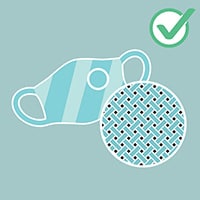
Do NOT wear cloth masks with
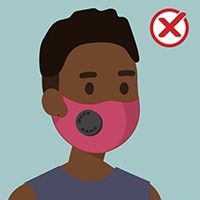
Disposable procedure masks are widely available. They are sometimes referred to as surgical masks or medical procedure masks.
Wear procedure masks with
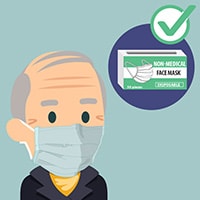
Do NOT wear procedure masks with
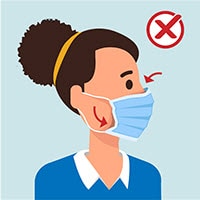
Ways to have better fit and extra protection with cloth and disposable masks
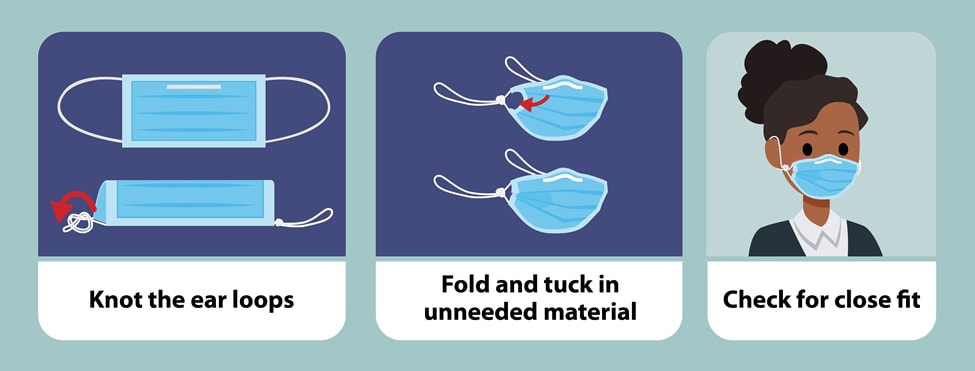


Some masks are designed and tested to ensure they perform at a consistent level. These masks are labeled to tell you what standard they meet. These masks are labeled:
These are new standards. Lists of masks that meet these standards and more information on their availability can be found on the NIOSH Personal Protective Equipment Information (PPE-Info) webpage. These masks have markings printed on the product to indicate they are authentic.
Follow manufacturer’s instructions on how to wear, store, and clean or properly dispose of the mask. These should be worn according to the manufacturer’s instructions without modifications.
Wear masks that meet a standard with
Do NOT wear masks that meet a standard
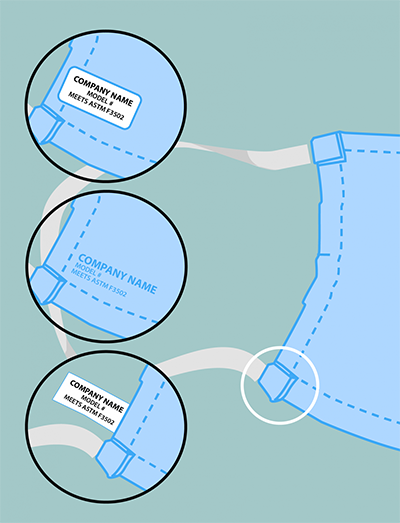
When choosing a respirator, look at how well it fits and read the manufacturer instructions. These instructions should include information on how to wear, store, and clean or properly dispose of the respirator. Respirators have markings printed on the product to indicate they are authentic, see appropriate N95 markingsimage icon and KN95 markings.
It is important for respirators to form a seal to the face to work properly. Gaps can let air with respiratory droplets leak in and out around the edges of the mask. Gaps can be caused by choosing the wrong size or type of respirator or when a respirator is worn with facial hair.
It is important to determine if your respirator fits properly. NIOSH and OSHA have developed a video and factsheetpdf icon demonstrating how to determine if the respirator fits properly (user seal check) and how to properly put on and take off a respirator. The information in the video and factsheet about how to use an N95 respirator also applies to international respirators, like KN95 respirators.
Most publicly available respirators are disposable and should be discarded when they are dirty, damaged, or difficult to breathe through.
More information on these two types of respirators is provided below.
Some respirators are designed and tested to meet international standards. The most widely available respirators that meet an international standard are KN95 respirators. Other examples include 1st, DL2, DL3, DS2, DS3, FFP2, FFP3, KN100, KP95, KP100, P2, P3, PFF2, PFF3, R95, and Special.
Poor quality KN95 respirators
What to know about international respirators
Do NOT wear international respirators
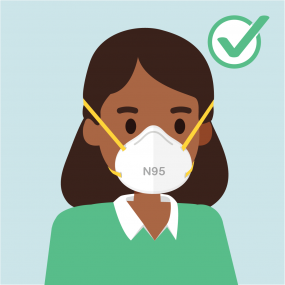
NIOSH approves many types of filtering facepiece respirators. The most widely available are N95 respirators, but other types (N99, N100, P95, P99, P100, R95, R99, and R100) offer the same or better protection as an N95 respirator. Lists of respirators that are NIOSH-approved can be found on the NIOSH-Approved Particulate Filtering Facepiece Respirators webpage.
CDC recommends that specially labeled “surgical” N95 respirators — a special subtype of N95 respirators that provide additional protection against hazards present during medical procedures, such as blood splatter — should be reserved for use by healthcare personnel.
Employers who want to distribute N95 respirators to employees shall follow an Occupational Safety and Health (OSHA) respiratory protection programexternal icon.
What to know about NIOSH-approved respirators
Do NOT wear NIOSH-approved respirators
Anyone ages 2 years or older who is not vaccinated or not up to date on vaccines should wear masks in indoor public spaces. This recommendation also applies to people who are up to date on their vaccines when they are in an area of substantial or high transmission. CDC also currently recommends universal indoor masking for all teachers, staff, students, and visitors to K-12 schools, regardless of their vaccination status or the area’s transmission rates. The benefits of mask-wearing are well-established.
Parents and caregivers may have questions about NIOSH-approved respirators (such as N95s) for children. Although respirators may be available in smaller sizes, they are typically designed to be used by adults in workplaces, and therefore have not been tested for broad use in children.
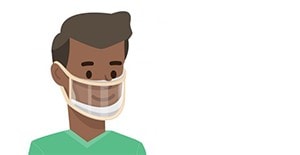
Clear masks or cloth masks with a clear plastic panel are an alternative type of mask that may be helpful when interacting with certain groups of people, such as:
The FDA cleared for marketing a transparent medical mask. These transparent medical masks should be reserved for use by healthcare workers and patients who require them.
If you use this type of mask, make sure
For more information on science behind improving how your mask protects you, see:
Content source: National Center for Immunization and Respiratory Diseases (NCIRD), Division of Viral Diseases